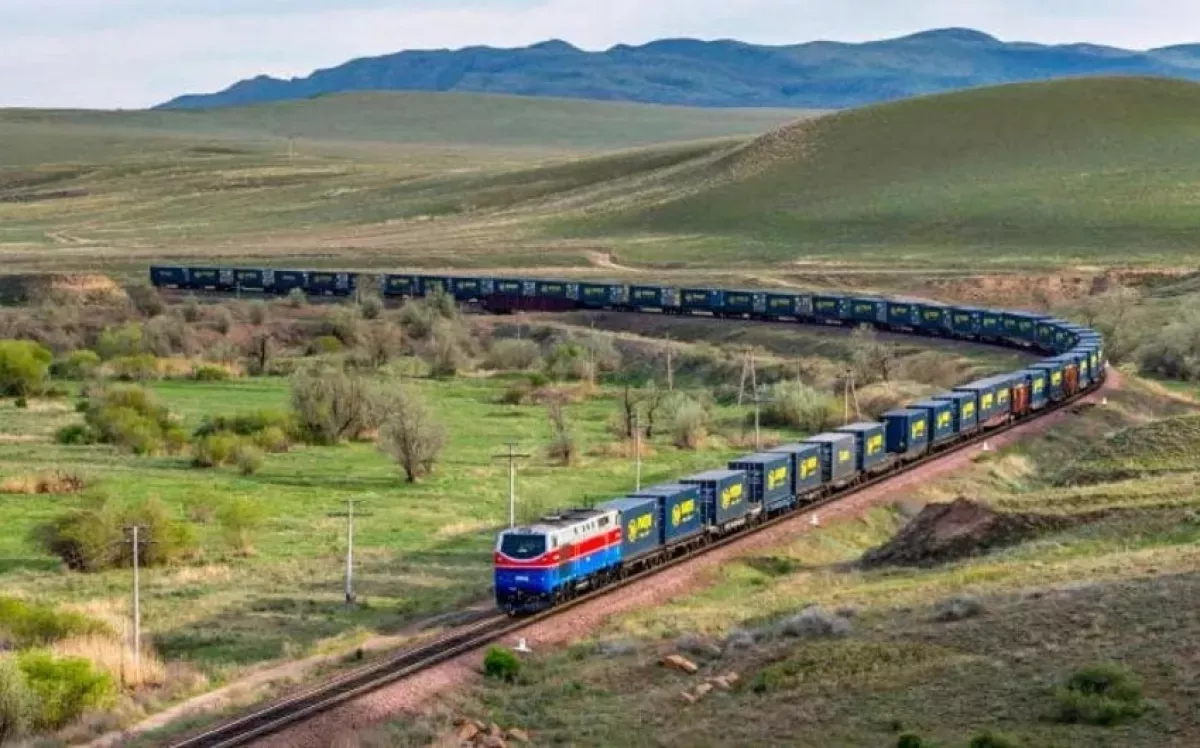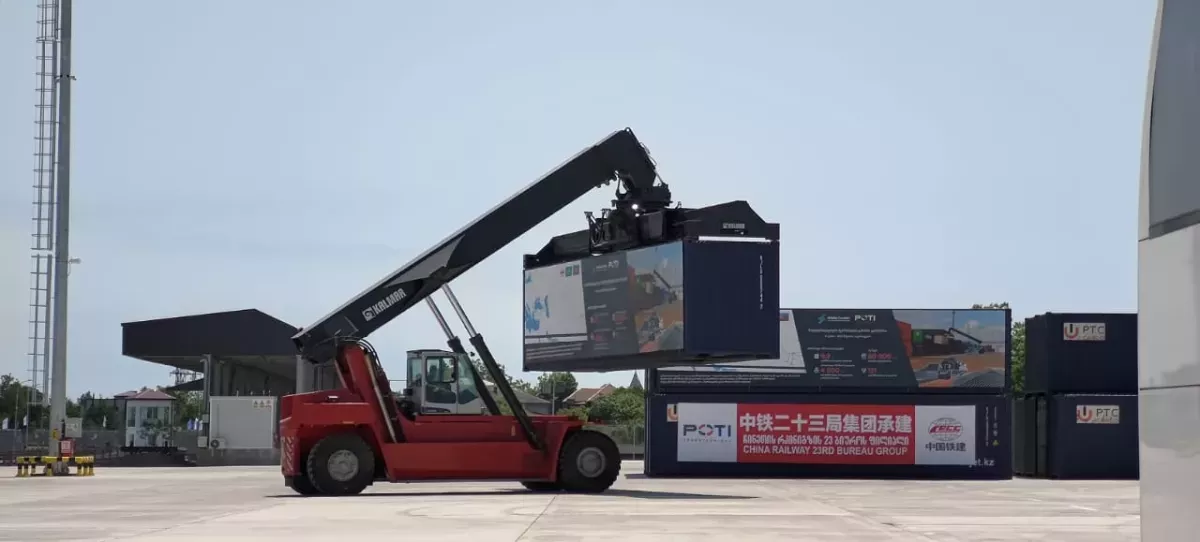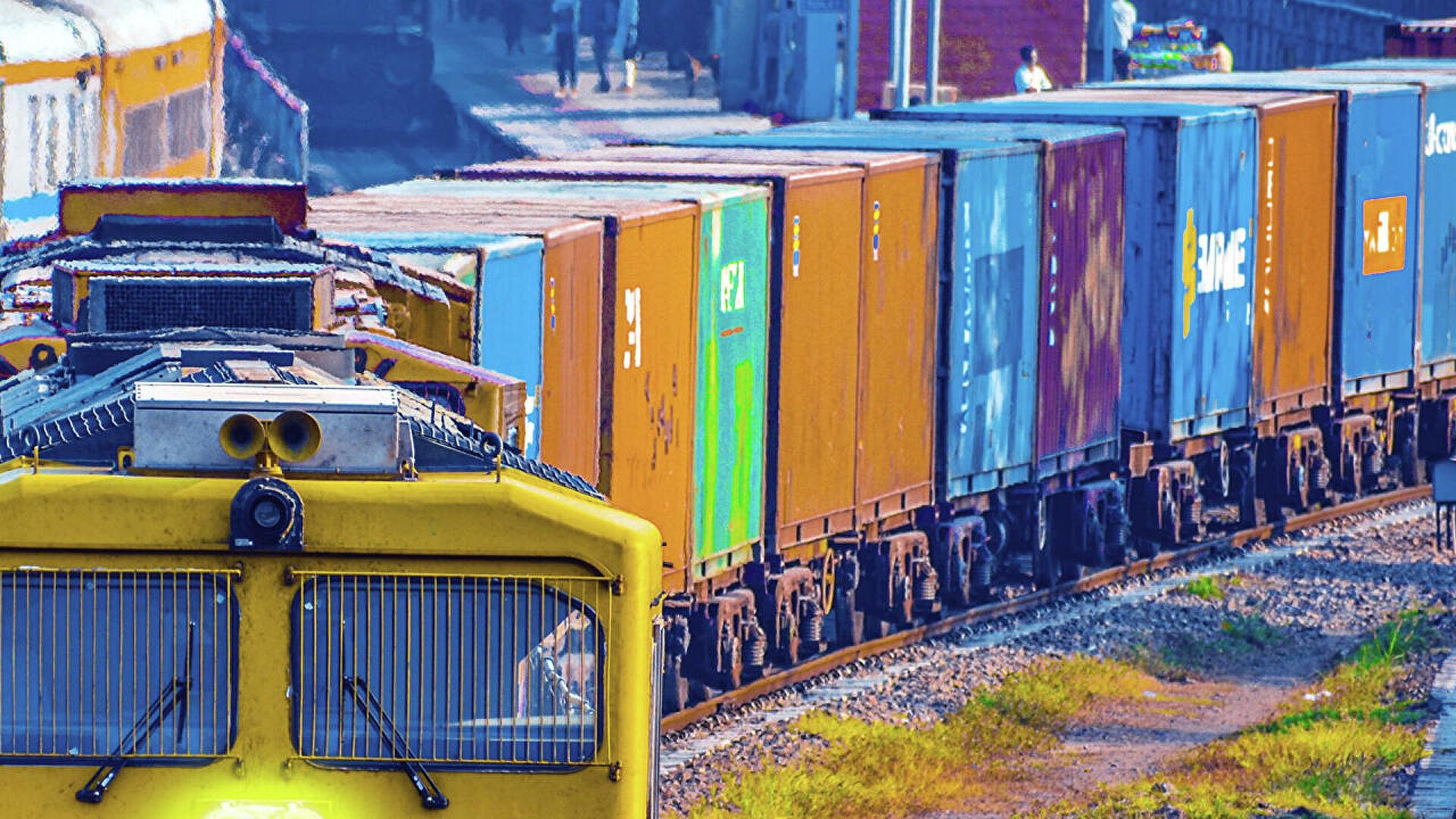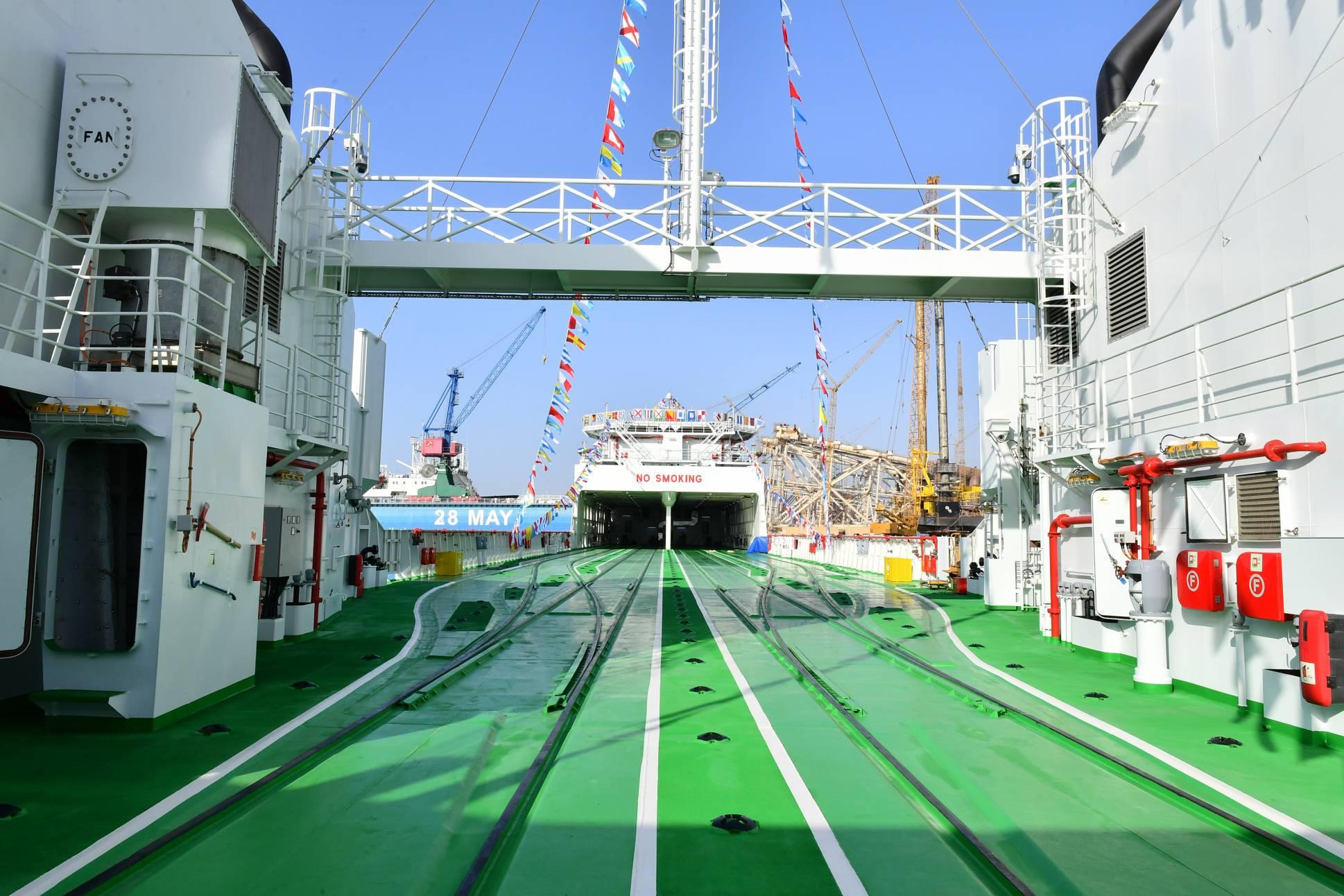Trans-Caspian Route: Riding the wave of terminal boom Caliber.Az review
The short delivery distance, convenience, and safety of logistics are increasingly attracting international interest in shipments via the Trans-Caspian International Transport Route (TITR) each year. Amid the dynamic growth of freight traffic along the Middle Corridor, Azerbaijan and its partners in the Caspian-Black Sea region are increasing investments in the development of port terminals and the modernisation of railway lines along the entire route. The latest step in this direction was the recent commissioning of a new terminal near the Georgian port of Poti, built by the Azerbaijani company JSC INNOPRO with financial participation from the Kazakhstan-based transport and logistics investment group PTC Holding.
Today, it is difficult to overestimate the importance of combined Trans-Caspian container transshipment involving sea, rail, and road transport along the Middle Corridor routes. In recent years, freight volumes from China and the Central Asian states to Türkiye and the EU — and in the reverse direction — have grown significantly. Due to its favourable geographic location and well-developed logistics and transport infrastructure, Azerbaijan plays a pivotal role in all Middle Corridor projects. Together with regional partners — Kazakhstan, Georgia, and Türkiye — the country is coordinating plans to optimise regional logistics, introducing digital technologies into transport infrastructure, and harmonising tariffs and customs regulations.

Naturally, port and railway infrastructure along the entire Trans-Caspian route is undergoing modernisation. This need is particularly acute in Georgia and, to no lesser extent, in Kazakhstan, where there is a high density of cargo transshipment activity at the border with China and, in part, at the port of Aktau. To overcome the “bottleneck” effect in the Caspian ports, Baku and Astana signed a Roadmap nearly three years ago for the coordinated elimination of logistical constraints and the development of the Trans-Caspian International Transport Route (TITR) for the years 2022–2027.
The roadmap includes dredging works in the Kazakh port of Kuryk, the development of railway infrastructure, an increase in the number of locomotives handling wagon loading and unloading, and the expansion of throughput capacity at the modernised Aktau port. Planned projects also include the construction of a bypass railway line around the Almaty railway junction — which will help redirect cargo flows to the new Zhetygen–Kasym-Batyr railway — the construction of a new Bakhty–Ayagoz railway line, and the opening of a third border crossing with China: “Bakhty–Chuguchak”.
Similar efforts to expand the capacity of transport infrastructure have been undertaken in Georgia. Thanks to additional investments from Baku and the involvement of specialists from Azerbaijan Railways CJSC (ADY), the reconstruction of a 184-kilometre section of the Baku–Tbilisi–Kars (BTK) railway running through Georgian territory was completed in May 2024. This upgrade has increased the throughput capacity of this key component of the Trans-Caspian International Transport Route (TITR) from 1 million to 5 million tonnes of cargo per year.
In early June of this year, a modern rail container and freight terminal was commissioned in Tbilisi, with infrastructure designed for multimodal transportation. The terminal’s proximity to the airport, highways, and railway lines strengthens its role as a key transport hub along the Middle Corridor. Meanwhile, as part of the TITR development, 5.4 hectares of land have been acquired at the Port of Poti, where the container terminal is undergoing modernisation and expansion. Two STS Post-Panamax cranes will be installed, and a new berth will be capable of accommodating vessels up to 300 metres in length with a draft of up to 13.5 metres. As a result, by 2027, the container terminal’s capacity will increase by an additional 50,000 TEU (twenty-foot equivalent units), bringing its total annual handling capacity to 400,000 TEU.

Just recently, a ceremony was held near the Georgian port of Poti to inaugurate a new container terminal built by the Kazakh transport and logistics investment group PTC Holding. The total investment in the creation of the Poti Transterminal amounted to $31.5 million and was financed by a subsidiary of Kazakhstan’s Halyk Bank. Georgian and Kazakh partners each hold a 50% stake in the project. The terminal was completed in just 16 months and implemented by the Azerbaijani company JSC INNOPRO, which developed both the design and cost-estimate documentation. Azerbaijani engineers and specialists were directly involved in all stages of the project — from concept development to construction and commissioning — ensuring that the terminal meets modern international standards and is equipped with state-of-the-art logistics infrastructure, video surveillance systems, and more.
The facility, which spans nine hectares, has an annual capacity of 80,000 TEU, with the potential to expand to 200,000 TEU. The terminal is equipped with two high-capacity cranes and a shunting locomotive, allowing it to handle up to 120 railcars or 50 containers per hour. This significantly increases throughput and reduces waiting times. Previously, only one container block train per day arrived in Poti from Azerbaijan, but the new terminal can accommodate up to five container trains daily.

Poti Transterminal is a key component of the TITR development strategy. In 2025, it is expected to handle up to 95,000 TEU in transit between China and Europe. Kazakhstan invested in this strategic hub with the aim of facilitating the growth of Chinese and European freight traffic. It is also worth noting that during the June 9 talks in Astana between Bulgarian President Rumen Radev and Kazakh President Kassym-Jomart Tokayev, an agreement was reached to potentially integrate Bulgaria’s Black Sea ports — Varna and Burgas — into the TITR network.
This development is yet another testament to the growing year-on-year interest in freight transshipment via the Trans-Caspian route, especially in light of the geopolitical shifts of recent years and the disruption of traditional transport and logistics chains. While cargo volumes along the TITR amounted to around 600,000 tonnes in 2021, by the end of last year they had reached 4.5 million tonnes — a 7.5-fold increase! In 2025, traffic along the Middle Corridor is expected to rise further to 5.2 million tonnes, of which 4.2 million tonnes will transit through the participating countries. Forecasts suggest the route’s throughput capacity could reach 10 million tonnes per year by 2027, creating a solid foundation for expanding Azerbaijan’s transit potential.
Accordingly, Azerbaijan’s interest in the new container terminal in Poti is substantial. On 9 June, representatives of ADY Express — a subsidiary of Azerbaijan Railways and a leading container operator along the route — took part in the terminal’s launch ceremony as a key partner. “In 2024, 390 container block trains passed along the TITR, compared to just 10–12 block trains in 2023 — representing more than a 30-fold increase,” said Rashad Majidov, Chief Operating Officer of ADY Express, during the recent Baku Energy Forum. And the momentum continues: in January–April 2025, Azerbaijan Railways increased its container transport by another 56%.

In light of the growing forecasts for Trans-Caspian traffic, Azerbaijan is also making significant efforts to modernise existing facilities and construct new terminals at the Baku International Sea Trade Port (BISTP) in Alat. The port’s overall throughput capacity is set to rise from the current 15 million tonnes to 25 million tonnes. The capacity of the first phase of BISTP, currently at 100,000 TEU, is expected to be increased to 150,000 TEU in the coming years, with a longer-term goal of expanding container handling capacity to 500,000 TEU.
This dynamic is reflected in 2024 statistics: the total cargo turnover at the harbour reached 7.6 million tonnes, and container traffic grew by 73%. Over the first four months of this year alone, 38,600 TEU containers were handled at the Alat port. As noted by Khudayar Hasanli, Head of Strategic Planning and Development at BISTP, during the 22nd Caspian International Transport, Transit and Logistics Exhibition in Baku, a key factor is the optimisation of transit operations and faster cargo handling at the Alat port: “Container cargo at the Baku Port is handled in an average of 15–20 hours, whereas the protocol allows up to 30 hours for processing.”








